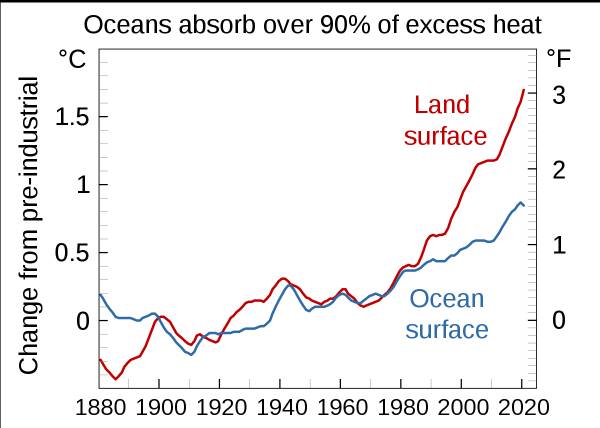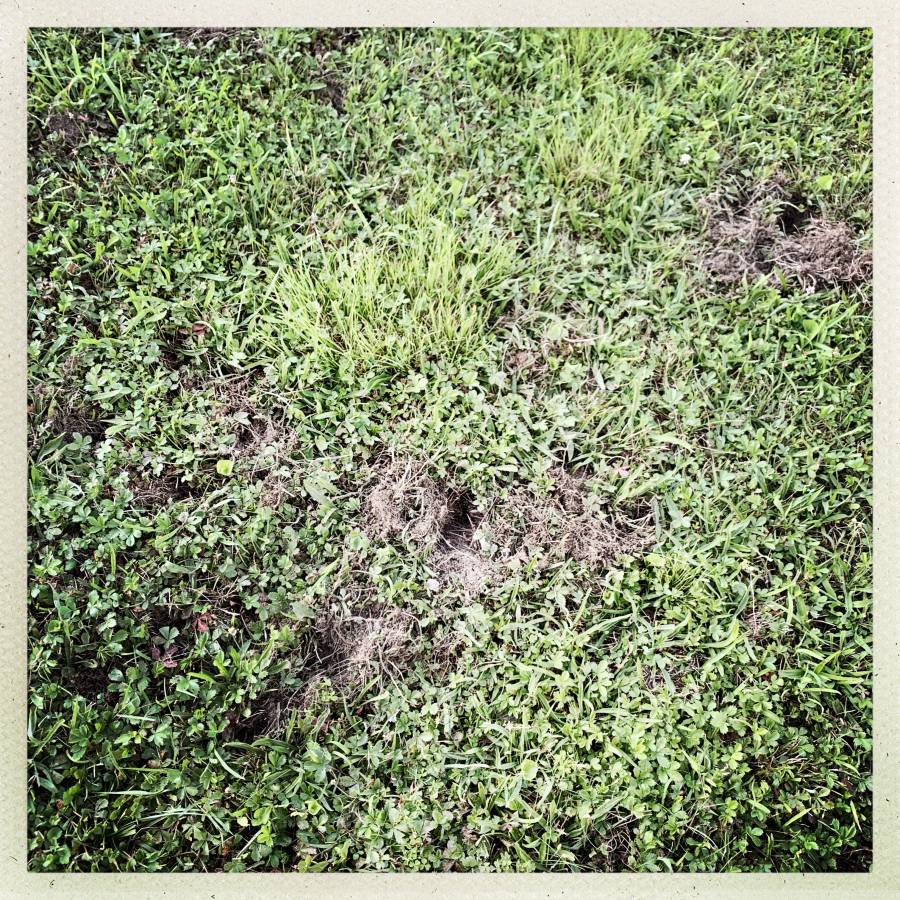The boffins didn’t even predict it, except under the “there may be run-away reactions” cover.
Anyone who has paid any attention to the climate disaster will have heard about the methane-containing ice which is melting, and which is contributing its own share of methane to the existing layer of CO2 surrounding the planet. When I first heard about that, it was in the context of an article that was saying, in effect, “ZOMGGGGGG We are ALL GONNA DIE!” and it was called “The Clathrate Gun” implying we were playing species-wide Russian roulette. [with 5 rounds in the cylinder] That, of course, is all coming true – there are lakes in the north that bubble endlessly with flammable bubbles of methane. [stderr]

Collective humanity’s response to a threatened extinction is predictable: it’s the same as the response it mounted to COVID-19. Finger-pointing, promises to do something eventually, and claims that it’s not real. As I’ve commented elsewhere, if humanity’s response to COVID-19 was a dry-run for dealing with the climate disaster, we’re doomed. I don’t just mean “fucked” – I mean, “doomed.”
 One of the things I learned the other day, which was one of those “duh” moments, is that a +2C temperature increase is a global average, and the temperatures over land are going to be higher. Much higher – as much as +10C. Because land isn’t a great, big, heat-sink and it’s not as reflective as water. The oceans still have great big ice cubes in them to cool them down, for now. The ice cubes, notably, are melting increasingly quickly.
One of the things I learned the other day, which was one of those “duh” moments, is that a +2C temperature increase is a global average, and the temperatures over land are going to be higher. Much higher – as much as +10C. Because land isn’t a great, big, heat-sink and it’s not as reflective as water. The oceans still have great big ice cubes in them to cool them down, for now. The ice cubes, notably, are melting increasingly quickly.
The death of the insects has been one other tocsin of what is coming. Insect populations have dropped around 41%. Imagine if you were an insecti vore and your food supply dropped nearly in half. [guardian] It’s just another form of the collapse of everything. I’ve noticed it, here. It used to be that the first week in July was fireflies every night – the whole yard and fields would be blinking with thousands of them. For that matter, the ponds used to disgorge armies of suicidal toads, trying to find a lawn mower to appear under; the grass would be hopping with them. This year: no toads at all and no fireflies. I saw a few up around a cornfield up the road, but by “few” I mean maybe 100. Last year I saw a few dozen monarch butterflies. This year, I saw 4. Populations of all sorts are going to be re-balancing to meet the new reality, and the same process will be happening in the oceans. There is nothing but badness coming. There will be winners and losers, but right now a lot of insect species are losing, permanently.
vore and your food supply dropped nearly in half. [guardian] It’s just another form of the collapse of everything. I’ve noticed it, here. It used to be that the first week in July was fireflies every night – the whole yard and fields would be blinking with thousands of them. For that matter, the ponds used to disgorge armies of suicidal toads, trying to find a lawn mower to appear under; the grass would be hopping with them. This year: no toads at all and no fireflies. I saw a few up around a cornfield up the road, but by “few” I mean maybe 100. Last year I saw a few dozen monarch butterflies. This year, I saw 4. Populations of all sorts are going to be re-balancing to meet the new reality, and the same process will be happening in the oceans. There is nothing but badness coming. There will be winners and losers, but right now a lot of insect species are losing, permanently.

Those are some of the diggings of Mr Skunk, who comes out at night and dines on grubs. I’m sure he’s also doing his bit to increase population pressure on the cidadas, who ought to be lurking around under there – so far, I have not seen one, yet. I remember when I was a kid and there were zillions, everywhere.
So, the bad news is that there isn’t just ice full of methane. There’s rock, too. Limestone in Siberia is also outgassing. It makes sense (I just never thought of it) that’s the stuff that idiots down here in Pennsylvania are fracking. [pnas]
Two elongated areas of increased atmospheric methane concentration that appeared during summer coincide with two stripes of Paleozoic carbonates exposed at the southern and northern borders of the Yenisey-Khatanga Basin, a hydrocarbon-bearing sedimentary basin between the Siberian Craton to the south and the Taymyr Fold Belt to the north. Over the carbonates, soils are thin to nonexistent and wetlands are scarce. The maxima are thus unlikely to be caused by microbial methane from soils or wetlands. We suggest that gas hydrates in fractures and pockets of the carbonate rocks in the permafrost zone became unstable due to warming from the surface. This process may add unknown quantities of methane to the atmosphere in the near future.
All that stuff the boffins were saying about “runaway reactions” appears to be just as true as all the stuff they were saying about “CO2 is a problem” and “get vaccinated.”

In other cheery news, the recent heat-wave in Greenland melted enough ice that it released enough water to cover all of Florida with 2″. [vice] If it was just Florida, it’d probably be alright, but it’s not.
The territory’s ice sheet has shed about eight billion tons of meltwater a day since last Wednesday, twice as much as its normal seasonal melt rate, due to temperatures that are averaging 10°C higher than past summers at this time.
Also:
I went down to see the fortune teller
Was gonna get my future read
She looked at my hand, she said “It’s bad”
She crossed her eyes and fell back dead
– Ray Wylie Hubbard [Three Days Straight]

This year I’ve noticed a significant decline in spider populations in my area, which is probably tied to reduced insect populations. I live in Minnesota and haven’t been bothered by mosquitos all summer long. That ain’t natural.
Yes, I believe everyone “of a certain age” can remember the thick goo of squashed insects on the family’s car windshield, back in the day. And how today even a longish trip hardly brings the need for a wipe.
Also, notice how the tone about climate collapse has been changing in the news section of “Nature”. Twenty years ago it was scientists politely clearing their throaths and going “ahem…”, now they are, however politely, screaming their heads off. Scientists panicking is not a sound you ever want to hear.
Lastly, this just in for a nice loaded-trousers moment:
https://www.theguardian.com/environment/2021/aug/05/climate-crisis-scientists-spot-warning-signs-of-gulf-stream-collapse
Optimism is taking a battering.
… the methane-containing ice which is melting… saying, in effect, “ZOMGGGGGG We are ALL GONNA DIE!” and it was called “The Clathrate Gun” …
You might, or might not, get a similar effect from John Barnes’s Mother of Storms, a sort-of spoof of disaster novels which opens with Moscow, irritated by a rising Siberian independence movement, resolving the issue with an H-bomb that incidentally releases megatons of clathrates all at once. Everything which follows puts the H-bomb in the shade.
… no fireflies.
Have you had any droughts in the last couple of years? Fireflies spend about two years in larval form before their few weeks of glory – anything which dries up your local shallows will cause a major drop in blinky-butts for the following summers.
“Collective humanity’s response to a threatened extinction…”
I don’t think this will be the extinction of humanity, unfortunately we’re too smart for that… and also unfortunately, the climate change deniers also have enough brain cells to put together to realize that humans will likely survive, which I think is why such hyperbolic statements are counterproductive, as people will then reject your entire argument without realizing that things will still be *BAD*.
Climate change will cause certain parts of the world to become uninhabitable, or far less inhabitable. The resulting mass immigration (away from coastal cities, for example) may completely obliterate trade, the economy, the current geopolitical balance of power, and possibly all nation-states as we view them right now, but I think humanity will live on in some form or another.
Note that nation-states rarely go away peacefully…
“Have you had any droughts in the last couple of years?”
Since maybe 2015, I think it has been save to guess “yes” for recent droughts, floods, wildfire, storm-of-the-century or any combination thereof for any location you care to name.
But of course it is completely normal to have record temperatures every summer, winter, spring and fall, unprecedented rainfalls and so forth because it’s all a hoax, or something. It’ll still be normal when, on one especially fine summer’s day, the air finally catches fire. It’s only a shame that no one will be left alive to point out how this happens every
JulyJuneMarchMid-January and poke fun at the idiots who fell for that global warming scam.—
As for humanity’s response: No one should hold their breath. Case in point: the German election, which is as depressing as any election can be. I’ll give you 5:1 odds that sod all will change with either the conservatives staying in power for another 20 years and “thinking” about the environment, or the green party miraculously winning something – and still accomplishing nothing. And this despite the fact that the election is currently very much shaped by recent catastrophic flooding. One of those century-events, wouldn’t you know? Just a few decades early.
Second exhibit: Around here a common “rebuttal” to any debate on climate action is, “China produces much more CO2, why should we have to do anything before they do?!” Scientists simply don’t stand a chance against that kind of logic, I’m afraid.
It’ll be interesting to see how my fellow Europeans feel about all this when the coastlines start to noticeably change, although by then I’ll probabyl be too distracted by the horror of it all. But perhaps that’s the only thing left that’d draw some real attention (and real action) in the western world.
All the other climate-related problems have already been normalised to some degree. Natural disasters can be shrugged off as just that: natural disasters that do happen from time to time. Refugee crisis: Europe has had that for years. Rising food prices? Common complaint any where and any time. Weather extremes and records? See above. And all the rest is mostly just abstract news reports from far away. We’re used to bad news from distant places, too. But if the North Sea moves into your home and familiar outlines on the map change, that might just be noticeable to people again.
Presumably we’ll then be treated to the sea-level version of “the climate has always been changing”. And who knows, maybe Britain would finally be happy at the bottom of the sea…
Tangential but 3 space dot com stories via Abe Drayton’s Oceanoxia blog here :
https://freethoughtblogs.com/oceanoxia/2021/08/02/morbid-monday-the-u-s-fascist-movement-is-still-going-and-democratic-party-leadership-isnt-doing-anything-to-stop-it/#comment-15469
Plus I’ve been meaning to answer this for some tme but saw elsewhere that you wondered about the maximum temperatures plants can survive. It depends on the species of plant (obvs sorry) & their adaptations to cope with heat, water loss, etc.. but via the Adelaide Botanic Gardens Cacti (& more incl the wonderfully named Puple Vine of Evil, Adenia stylosa) glasshouse :
OTOH, Plant Answers suggests its 90 F which is 32 degrees Celsius here :
https://www.plantanswers.com/garden_column/june03/4.htm#:~:text=High%20temperatures%20speed%20up%20the,gets%2C%20the%20more%20they%20suffer!
Whilst this New Scientist article notes :
https://www.newscientist.com/article/2134206-extreme-plants-thrive-at-72c-in-new-zealands-hot-volcanic-soil/
So anywhere from 32 to over 80 degrees Celsius but of cours eteh hottewr the temperatures the less the percentage of flora species that can endure and survive it. Sorry if this comes far too late and out of date.
Personally, I think for most plants temperatures in the 40’s (C) combined with lack of water = really serious trouble and need tbe especially tough to survive mor ethan a few weeks -& that’s typing (badly no doubt) as an Aussie who regulatly gets weeks – or at least regularly consecutive days – of that in Summer here.
Natch, it depends on how long plants have to endure such temperatures the level of water they have available and humidity. So depends on exact species and exact conditions and scenario (obvs sorry) but yeah…
Incidentally, for the Aderlide Botanic Gardens Palm House see :
https://www.abc.net.au/gardening/factsheets/the-palm-house/12772190
With the Purple Vine of Evil (Adenia stylosa) featuring breifly at the 4 mins 30 secs mark. Toxic sap, leaves and well, all parts of this species being poisonous if ingested from what I’ve read elsewhere.
SteveOr@#6:
So anywhere from 32 to over 80 degrees Celsius but of cours eteh hottewr the temperatures the less the percentage of flora species that can endure and survive it. Sorry if this comes far too late and out of date.
Yeah, that’s about what I expected. I didn’t expect a single cut-off “everything dies here” but there are obvious implications for, say, corn crops exposed to 102F for a week. From the sound of it, there are already going to be crop failures in the US agricultural breadbaskets – Florida and California, particularly. My fear is that the resulting cost spikes and panic will put the US into a tail-spin.
outis@#2:
https://www.theguardian.com/environment/2021/aug/05/climate-crisis-scientists-spot-warning-signs-of-gulf-stream-collapse
Yeah, I wrote about the gulf stream collapse back in March. [stderr] That’s really scary. If the currents die, then the existing anoxic zones on the east and west coast will no longer be somewhat seasonal, and they will enlarge.
Ok, here’s the plan…
A huge, decades long international effort, led by China, to dig out the entire Gobi desert to 100ft below sea level. Then run a 500km canal several miles wide to the ocean.
This will definitely not cause a massive, widespread ecological catastrophe, and frankly even if it did at least coastal property prices won’t be affected. Plus, think of all that new, cheap waterfront property…